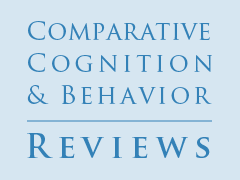Rudiments of mind: Insights through the chick model on number and space cognition in animals
by Giorgio Vallortigara,
Center for Mind/Brain Sciences, University of Trento, Rovereto, Italy
Lucia Regolin,
Department of General Psychology, University of Padova, Padova, Italy
Cinzia Chiandetti,
Center for Mind/Brain Sciences, University of Trento, Rovereto, Italy and Department of Psychology, University of Trieste, Trieste, Italy
Rosa Rugani,
Center for Mind/Brain Sciences, University of Trento, Rovereto, Italy
Reading Options:
Download/Read PDF | Add to Endnote
Abstract
Studies on human infants, focused on the ontogenetic origins of knowledge, have provided evidence for a small set of separable systems of core knowledge dealing with the representation of objects, number, and space. We investigated core knowledge systems from a comparative perspective, making use of the domestic chick as a model system, and filial imprinting as a key to animal mind. Here, we discuss evidence showing precocious abilities in the chick for representing: (i) the cardinal and ordinal/sequential aspects of numerical cognition, and (ii) the distance, angle, and sense relations among extended surfaces in the surrounding layout. Some of the abilities associated with core knowledge systems of number and space were observed in the absence of (or with very reduced) visual experience, supporting a nativistic account of the origins of knowledge.
Keywords: number, space, geometry, avian cognition, chick
Vallortigara, G., Regolin, L., Chiandetti, C., & Rugani, R. (2010). Rudiments of mind: Insights through the chick model on number and space cognition in animals. Comparative Cognition & Behavior Reviews, 5, 78-99. Retrieved from https://comparative-cognition-and-behavior-reviews.org/ doi:10.3819/ccbr.2010.50004
